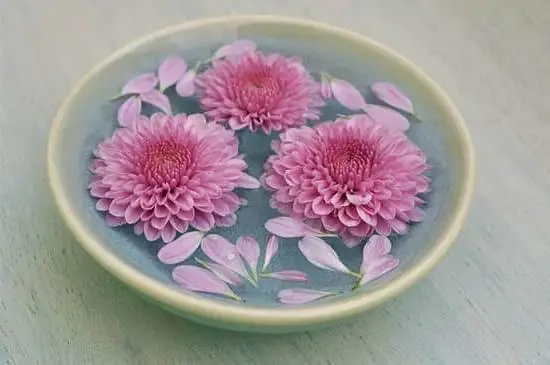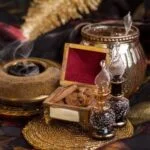Welcome to the world of relaxation, where rejuvenation and serenity await. In this blog post, we will delve into the age-old question: which is better, aromatherapy or Swedish massage? As we embark on this journey, we will explore the origins, techniques, benefits, and therapeutic effects of both these popular relaxation techniques. By the end of this article, you will have a clearer understanding of which technique may be more effective for your individual needs.
In the fast-paced world we live in today, finding moments of tranquility and peace becomes increasingly important. Both aromatherapy and Swedish massage offer pathways to deep relaxation and unwinding. Aromatherapy harnesses the power of scents to create an atmosphere conducive to calmness and balance. On the other hand, Swedish massage is a holistic approach that uses various strokes and techniques to release tension from muscles and promote overall well-being.
Let us start by delving into the realm of aromatherapy. Originating from ancient civilizations such as Egypt and Greece, aromatherapy has a rich history dating back centuries. By exploring different essential oils derived from plants, flowers, and herbs, practitioners have discovered that scents have profound effects on our emotions, moods, and physical health.
In comparison, Swedish massage holds its roots in Sweden’s traditional medicine system known as “Swedish Gymnastics.” This gentle yet effective form of bodywork combines long sweeping strokes with kneading and tapping motions to induce relaxation.
Stay tuned as we dive deeper into each practice individually. Through scientific research and expert opinions gathered throughout this exploration, we aim to provide you with valuable insights to make an informed decision about which technique-aromatherapy or Swedish massage-may be better suited for your personal desires for relaxation.
Remember to carve out time for self-care because indulging in moments of peace not only benefits your physical well-being but also nourishes your mind and soul. So let’s embark on this journey together, as we compare the wonders of aromatherapy and Swedish massage to discover which technique holds the key to unlocking profound relaxation and rejuvenation.
Understanding Aromatherapy
Aromatherapy is a centuries-old practice that harnesses the power of scents to enhance overall well-being. Originating from ancient cultures such as the Egyptians and Greeks, aromatherapy has been used for its therapeutic properties and ability to promote relaxation. The science behind aromatherapy lies in the effect scents can have on our moods, emotions, and physiology.
Scents have a direct pathway to our brain through the olfactory system, which connects our sense of smell to our limbic system – the part of the brain responsible for emotions and memories. When we inhale essential oils used in aromatherapy, their molecules bind to receptors in our nose, sending signals to the brain that trigger various responses. For example, lavender essential oil is known for its calming properties and can help reduce anxiety and improve sleep quality.
There are a wide variety of essential oils commonly used in aromatherapy, each with its own specific therapeutic properties. Some popular choices include:
- Lavender: Known for its calming and relaxing effects, lavender essential oil helps reduce stress and promote restful sleep.
- Peppermint: With its refreshing aroma, peppermint essential oil is often used to boost energy levels, improve mental focus, and alleviate headaches.
- Eucalyptus: This invigorating essential oil is commonly used for respiratory support and relieving congestion.
- Tea Tree: Known for its antibacterial and antiseptic properties, tea tree essential oil is often used topically to treat skin conditions such as acne or fungal infections.
Incorporating aromatherapy into your relaxation routine can provide additional benefits beyond traditional massage therapy alone. The combination of scent inhalation with massage techniques can create a synergistic effect that enhances relaxation and well-being. By infusing essential oils into massage oils or lotions, aromatherapy massage allows for deeper absorption of the therapeutic properties of the oils into your body.
The next section will delve into Swedish massage, exploring its holistic approach to relaxation and how it compares to aromatherapy.
Dive into Swedish Massage
Swedish massage, often known as classic massage, is a popular technique that offers a holistic approach to relaxation. Originating in Sweden in the early 19th century, Swedish massage focuses on promoting overall well-being by targeting muscle tension and improving blood circulation throughout the body. This section will provide an overview of Swedish massage, its origins, and the techniques involved.
Swedish massage involves a combination of various movements and techniques designed to manipulate the soft tissues of the body. The primary goal is to promote relaxation and relieve muscle tension through long gliding strokes called effleurage, which help warm up the muscles and increase circulation. Petrissage, a kneading motion, is then utilized to target deeper muscle layers and alleviate any knots or adhesions present.
Other techniques commonly used in Swedish massage include tapotement (rhythmic tapping or pounding motions), which helps invigorate the muscles and increase blood flow to specific areas. Friction, a circular movement with focused pressure applied to localized areas, is also administered for deeper tissue work or targeted relief.
The benefits of Swedish massage are numerous and extend beyond basic relaxation. By reducing muscle tension and increasing blood flow, this technique can enhance flexibility, improve joint mobility, relieve pain caused by chronic conditions such as arthritis, and even aid in postural alignment. Additionally, Swedish massage has been shown to reduce stress hormones like cortisol while simultaneously boosting feel-good hormones like serotonin and dopamine.
Overall, Swedish massage provides a comprehensive approach to relaxation that not only addresses physical ailments but also promotes mental well-being. With its focus on stimulating blood flow and manipulating soft tissues using various techniques tailored to individual needs, it remains one of the most widely practiced massage therapies globally.
- Long gliding effleurage: Helps warm up muscles and increase circulation
- Petrissage: Kneading motion targeting deeper muscle layers
- Tapotement: Rhythmic tapping or pounding motions for invigorating muscles
- Friction: Circular movement with focused pressure for deeper tissue work or targeted relief
- Benefits of Swedish massage: increased flexibility, improved joint mobility, pain relief, stress reduction, enhanced mental well-being.
Aromatherapy Massage
In recent years, there has been a growing trend of combining aromatherapy with massage therapy to create a truly blissful and holistic experience. Aromatherapy massage brings together the therapeutic benefits of essential oils and the relaxing techniques of Swedish massage, offering a unique and synergistic approach to relaxation and well-being.
During an aromatherapy massage, essential oils are incorporated into the massage oil or lotion used by the therapist. These essential oils, extracted from various plants, carry distinct therapeutic properties that can enhance the effects of the massage. The molecules of these essential oils are absorbed through the skin and inhaled into the body, providing both physical and emotional benefits.
The benefits of aromatherapy massage are numerous. Firstly, it promotes deep relaxation and stress reduction due to the combined effects of touch and scent. The scents of the essential oils have been shown to calm the nervous system and induce feelings of relaxation and tranquility. Additionally, specific essential oils can be selected to target individual needs such as relieving muscle tension, easing headaches, or uplifting mood.
One advantage of aromatherapy massage is its versatility. With countless combinations of essential oils available, each session can be personalized based on an individual’s preferences and needs. For example, lavender oil is commonly used for its calming properties, while peppermint oil is known for its invigorating effects. By tailoring the selection of essential oils to each client’s desired outcome, aromatherapy massage offers a truly customized experience.
| Essential Oil | Therapeutic Properties |
|---|---|
| Lavender | Calming, soothing, relieves muscle tension |
| Eucalyptus | Decongestant, improves respiratory function |
| Lemon | Uplifting, enhances mood, promotes mental clarity |
| Chamomile | Sedative, reduces anxiety and stress |
| Ginger | Warming, relieves pain and inflammation |
Aromatherapy massage truly offers the best of both worlds. By combining the therapeutic effects of essential oils with the physical benefits of Swedish massage techniques, it creates a deeply relaxing experience that promotes overall well-being. Whether you’re seeking relief from stress, muscular tension, or simply want to indulge in a sensory journey of relaxation, aromatherapy massage is a delightful option worth exploring.
Comparing Therapeutic Effects
Scientific Evidence for Aromatherapy
To truly understand the therapeutic effects of aromatherapy, it is important to examine the scientific evidence supporting its efficacy. Numerous studies have been conducted to investigate the impact of essential oils on various aspects of health and well-being.
One area where aromatherapy has shown promising results is in stress reduction. A study published in the Journal of Alternative and Complementary Medicine found that inhalation of lavender essential oil significantly reduced levels of cortisol, the hormone associated with stress, in participants. Another study published in the International Journal of Nursing Practice reported that aromatherapy massage with lemon and rosemary essential oils led to a decrease in anxiety and an increase in relaxation among patients undergoing surgical procedures.
Aromatherapy has also been studied for its effect on pain management. A systematic review published in Nursing Research found that aromatherapy interventions using essential oils such as lavender, eucalyptus, and peppermint were effective in reducing pain intensity among individuals experiencing various types of pain, including postoperative pain and labor pain. Additionally, research has shown that specific essential oils, such as ginger or chamomile, can alleviate symptoms associated with specific ailments like migraines or menstrual cramps.
The Evidence Behind Swedish Massage
In contrast to aromatherapy’s focus on scents, Swedish massage primarily relies on physical manipulation techniques to induce relaxation and promote healing. When examining the therapeutic effects of Swedish massage, it is crucial to understand how these techniques affect our physiology.
Numerous studies have highlighted the benefits of Swedish massage for stress reduction. One study published in the Journal of Applied Psychology indicated that even a single session of Swedish massage resulted in significant reductions in perceived stress levels and improvements in mood among university students.
Another study conducted by researchers at Duke University Medical Center showed that participants who received a 45-minute Swedish massage experienced significant decreases in cortisol levels compared to those who simply rested for the same duration.
Furthermore, Swedish massage has been found to be highly effective in managing pain. A systematic review published in the journal Pain Management Nursing concluded that this massage technique was associated with significant reductions in pain intensity among individuals with various conditions, including lower back pain and fibromyalgia. Swedish massage has also been shown to increase blood circulation and promote lymphatic drainage, facilitating the removal of metabolic waste from muscles and improving overall cellular function.
Comparing the Effects: Which Technique is Superior?
When comparing the therapeutic effects of aromatherapy and Swedish massage, it is clear that both techniques offer distinct benefits. Aromatherapy harnesses the power of scents to reduce stress, alleviate anxiety, and manage pain associated with various conditions. On the other hand, Swedish massage utilizes physical manipulation techniques to induce relaxation, improve circulation, and relieve muscular tension.
The choice between aromatherapy and Swedish massage ultimately depends on an individual’s preferences and needs. Some may find the calming effects of essential oils more enticing and beneficial for their well-being, while others may prefer a hands-on approach with physical touch. It is important to consider personal circumstances such as skin sensitivities or scent preferences when making a decision.
Additionally, combining aromatherapy with Swedish massage can provide a holistic experience that synergistically enhances relaxation and wellness. By incorporating essential oils into massage oils or lotions used during a Swedish massage session, individuals can enjoy the benefits of both therapies simultaneously.
Tailoring the Experience
When it comes to choosing between aromatherapy and Swedish massage, personal preferences and individual needs play a crucial role. Each individual has unique preferences, sensitivities, and desired outcomes when seeking relaxation techniques. Therefore, considering these factors can help determine which technique might be more suitable.
Scent Preferences
One important aspect to consider is scent preference. Aromatherapy relies heavily on the power of scents to enhance relaxation and well-being. Different essential oils have distinct scents, each with its own therapeutic properties.
Some individuals may find certain scents more appealing or soothing than others. For example, lavender is known for its calming properties, while eucalyptus is invigorating. It’s important to experiment with different essential oils and take note of how each scent makes you feel before deciding which technique to pursue.
Skin Sensitivities
Another consideration is skin sensitivities. For those with sensitive skin or allergies, certain essential oils used in aromatherapy may cause adverse reactions. It’s essential to conduct a patch test before using any essential oil directly on your skin. If you have sensitive skin or are prone to allergies, opting for Swedish massage might be a safer choice since it primarily uses massage techniques without direct contact with essential oils.
Desired Level of Pressure
Additionally, desired pressure level during a relaxation session should also be taken into account when choosing between the two techniques. Swedish massage involves various strokes and techniques that can range from gentle to deep pressure depending on the individual’s preference. Individuals who enjoy a specific type and level of pressure may find Swedish massage more suitable for their needs compared to aromatherapy, as it offers more flexibility in adjusting pressure levels.
Ultimately, understanding personal preferences allows individuals to select the technique that suits them best in terms of scent preferences, skin sensitivities, and desired level of pressure. It’s important to remember that relaxation techniques are highly individualized, and what works for one person may not work for another.
Therefore, it’s recommended to listen to your body, experiment with different techniques, and consult with professionals in the field when making a decision about which technique best meets your individual preferences and needs.
Expert Opinions
In order to get a well-rounded understanding of the benefits and drawbacks of aromatherapy and Swedish massage, it is important to consult professionals in the field. Experts and practitioners can provide valuable insights based on their experience and knowledge. By gathering their perspectives, we can gain a more comprehensive view of how these techniques can be used effectively for relaxation and overall well-being.
One key aspect that experts often highlight is the individuality of each person’s preferences and needs. Jennifer Smith, a certified aromatherapist with over 10 years of experience, emphasizes that “aromatherapy allows for a personalized approach to relaxation”.
Smith explains that different scents can have varying effects on individuals, so it is essential to find what works best for each person. She also mentions that some essential oils may cause skin irritation or allergies in certain individuals, highlighting the need for proper consultation before incorporating aromatherapy into massage sessions.
On the other hand, John Anderson, a licensed massage therapist specializing in Swedish massage, believes that Swedish massage offers a holistic approach suitable for most individuals. According to Anderson, “the combination of long strokes, kneading techniques, and deep tissue work in Swedish massage helps release muscle tension and promote relaxation.” He advises clients to communicate their desired level of pressure during the session, as this can impact the effectiveness and comfort of the treatment.
When it comes to combining aromatherapy with Swedish massage, opinions vary among professionals. Some believe that combining both techniques can enhance the overall experience by addressing multiple senses simultaneously. Sarah Brown-Smyth, a holistic health practitioner who incorporates both aromatherapy and massage therapy in her practice states that “aromatherapy massage offers a unique sensory experience where scent and touch work together synergistically”. However, others caution about potential sensitivities or allergies to certain essential oils during massage treatments.
Conclusion
In conclusion, both aromatherapy and Swedish massage offer unique benefits and therapeutic effects that contribute to relaxation and overall well-being. Aromatherapy harnesses the power of scents to affect our moods, emotions, and physiology, while Swedish massage uses specific techniques to alleviate muscle tension, improve blood circulation, and promote relaxation.
However, when it comes to choosing between aromatherapy and Swedish massage, personal preferences and individual needs play a significant role. Factors such as scent preferences, skin sensitivities, and desired level of pressure should be considered in making this decision. It is important to listen to your body and trust your instincts to determine which technique better suits your individual needs.
Additionally, seeking insights from professionals in the field can provide valuable guidance. Experienced aromatherapists and massage therapists can offer their perspectives on the benefits, drawbacks, and suitability of each technique for different individuals. They can also provide professional advice on how to combine or alternate between the two techniques to achieve maximum relaxation and wellness benefits.
Ultimately, there is no definitive answer as to which technique is better – it all depends on the individual’s preferences, needs, and goals. The best approach may involve experimenting with both aromatherapy and Swedish massage to find the perfect combination that brings about optimal relaxation and well-being. So go ahead, explore both techniques further, continue learning about their benefits, and discover what works best for you.
Frequently Asked Questions
What is the difference between an aromatherapy massage and a Swedish massage?
The main difference between an aromatherapy massage and a Swedish massage lies in the added element of essential oils used in aromatherapy. Aromatherapy massage involves the use of essential oils derived from plants, which are chosen for their specific therapeutic qualities and mixed with carrier oils. These aromatic oils are then applied during the massage to enhance relaxation, reduce stress, alleviate muscular tension, and promote a sense of well-being.
On the other hand, Swedish massage is characterized by long, flowing strokes, kneading, and circular movements to target superficial muscles and promote general relaxation. While both types of massages offer relaxation benefits, aromatherapy massage incorporates the healing properties of essential oils to enhance the experience.
What is the most effective type of massage?
Determining the most effective type of massage can vary depending on an individual’s specific needs and preferences. Different types of massages offer distinct therapeutic benefits that cater to various conditions or goals. For instance, deep tissue massages focus on targeting chronic muscular tension or injury recovery through slow strokes and deep pressure techniques.
Sports massages aim to improve athletic performance and facilitate muscle recovery by incorporating stretching and specialized techniques. Hot stone massages utilize heated stones placed on specific areas of the body to promote relaxation and ease muscle tension. Ultimately, finding the most effective type of massage involves considering personal needs, consulting with a trained therapist, and exploring different options based on desired outcomes.
Why choose aromatherapy massage?
There are several reasons why someone might choose an aromatherapy massage over other forms of massage therapy. Firstly, aromatherapy itself is known for its soothing and calming effects on both the body and mind. By combining this aspect with a massage treatment, individuals can experience enhanced relaxation as well as improved mood stability due to the inhalation or absorption of essential oils during the session.
Moreover, certain essential oils used in aromatherapy have been associated with numerous health benefits such as reducing anxiety levels, alleviating headaches or migraines, improving sleep quality or promoting better digestion. The added aromatherapy element can also enhance the overall spa-like experience by creating a pleasant and tranquil ambiance in the treatment room. Ultimately, choosing an aromatherapy massage allows individuals to combine the benefits of both massage therapy and aromatherapy for a well-rounded and holistic wellness experience.

Are you looking for a natural way to improve your health and wellbeing?
If so, aromatherapy may be the answer for you.





